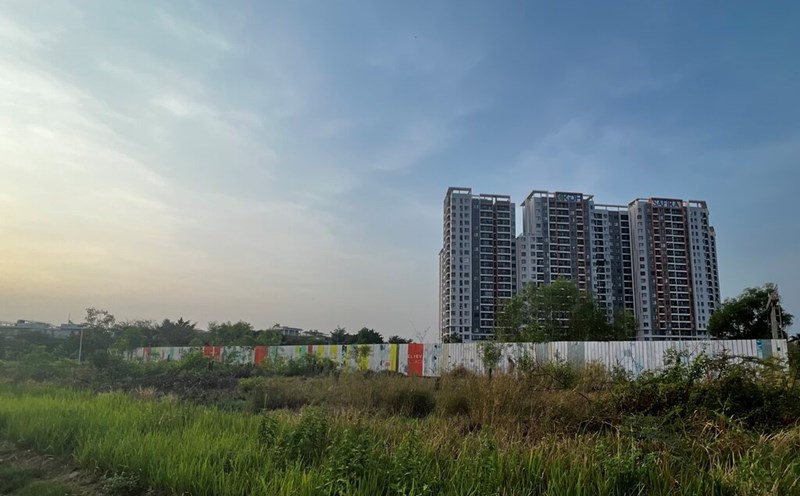The new regulations currently require households and individuals when converting land from agricultural land to residential land to be subject to 100% of the land price in the land price list for the entire area, regardless of whether the land is within or outside the limit.
While localities are currently issuing land price lists that are too high because they have integrated the land price adjustment coefficient (coefficient K) into the land price list. Typically, in Ho Chi Minh City, the land price list has increased from 3 to more than 38 times compared to before.
This is really putting great pressure on people when the total amount of money people have to pay is too high, far beyond financial capacity. Typically, a 20.0 m2 plot of land in Hoc Mon district (old) when converting its purpose to residential land must pay 1.7 billion VND or a 400 m2 plot in District 7 (old) must pay up to 14 billion VND.
Mr. Viet Doan, residing in Binh Trung Ward, said that he has a 210 m2 plot of land that is eligible for a resettlement in Long Binh Ward, Ho Chi Minh City but is stuck in planning. When the obstacles were removed, he learned about the procedures for dividing the plot and changing the purpose and was very "shocked" because he had to pay more than 5.7 billion VND in land use fees, beyond his ability to pay.
According to the current land price list, deep alley land on the main road in this area such as Nguyen Xien street is priced at 28 million VND/m2, while agricultural land is only about 600,000 VND, a difference of more than 27 million VND/m2, causing conversion costs to increase by more than 10 times. Previously, the land price in this area was only 2.7 million VND/m2.
The Ho Chi Minh City Real Estate Association (HoREA) said that the city currently has more than 13,000 plots of land that have not been granted certificates, accounting for 0.7% of the total number of plots in the area. In particular, households and individuals with houses and land in planning, not yet converted to use purpose, or wanting to legalize the right to use agricultural land areas interspersed in residential areas with stable access to existing housing are all facing difficulties when land prices increase and conversion costs fluctuate strongly.
Mr. Le Hoang Chau, Chairman of the Ho Chi Minh City Real Estate Association, said that Clause 5, Article 45 of the Land Law and Point c, Clause 11, Article 18 of Decree 101/2024/ND-CP have stipulated a policy allowing people to record land use fees and not limit the debt collection period compared to the previous Land Law 2013, which only allowed recording land use fees for 5 years.
However, according to Mr. Chau, the debt of land use fees leads to the consequences of land users having limited very important rights such as: not being allowed to exercise the rights to convert, transfer, lease, mortgage, sublease, donate land use rights, mortgage, contribute capital with land use rights. This means that even though there is a pink book, households and individuals cannot use the pink book for transactions and loans for business.
Mr. Le Hoang Chau proposed to choose the option of the Government issuing a separate resolution clearly stipulating a unified collection rate nationwide, instead of assigning localities to decide.
The collection rate is 20% of the land price in the land price list for the area within the limit and 30% for the area exceeding the limit. This level is more reasonable than the previous proposal of the Ministry of Finance, which is still considered high compared to the actual new land price list.
According to Mr. Le Hoang Chau, the resolution is just a temporary solution. In the long term, it is necessary to amend the problem at its root by adding regulations on preferential land price policies for areas within the limit in Article 159 of the 2024 Land Law.
To ensure the rights of the people, there needs to be a transitional regulation in the new policy, allowing the provincial People's Committee to refund the difference that households and individuals have paid according to the previous 100% regulation to create fairness and social consensus when recalculating the cost of residential land.












